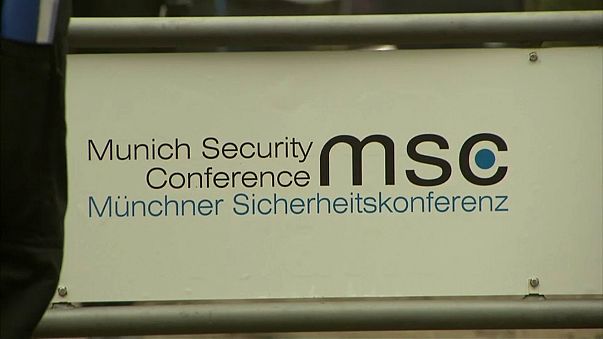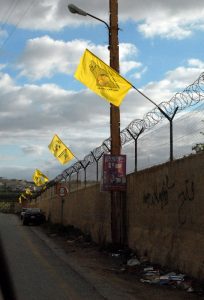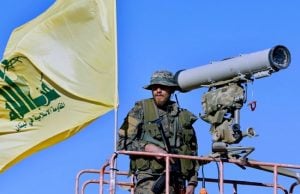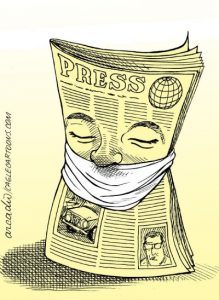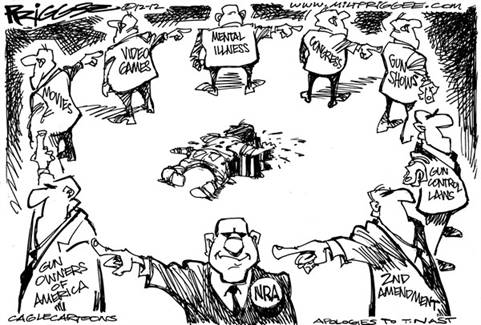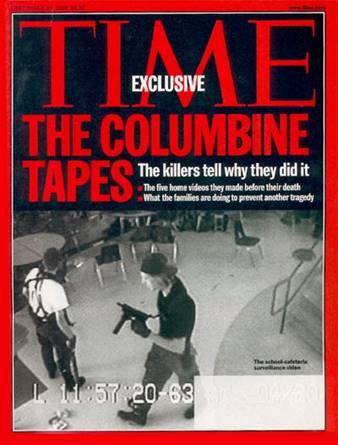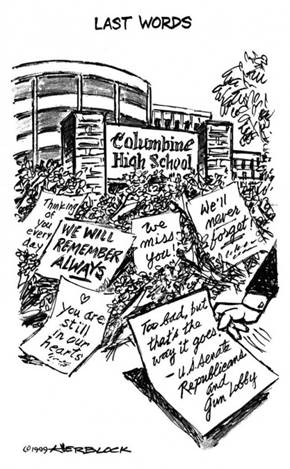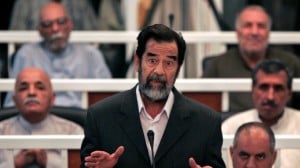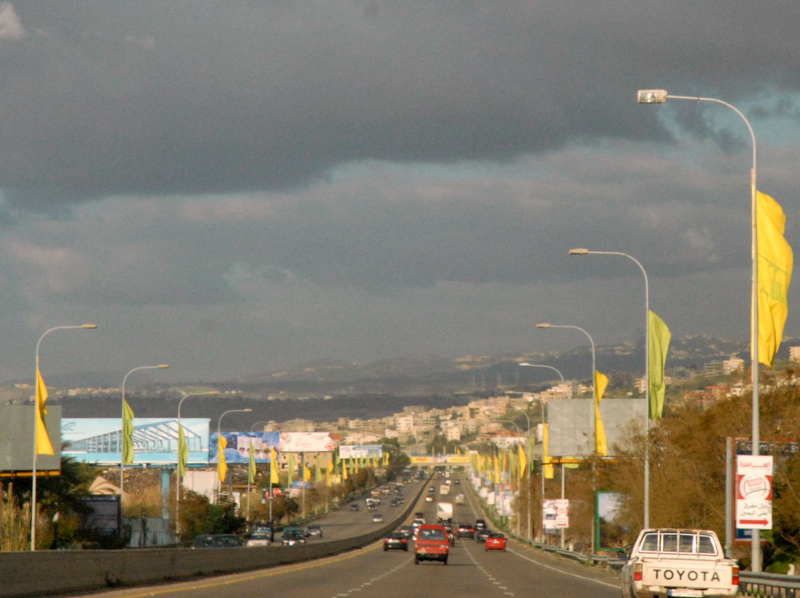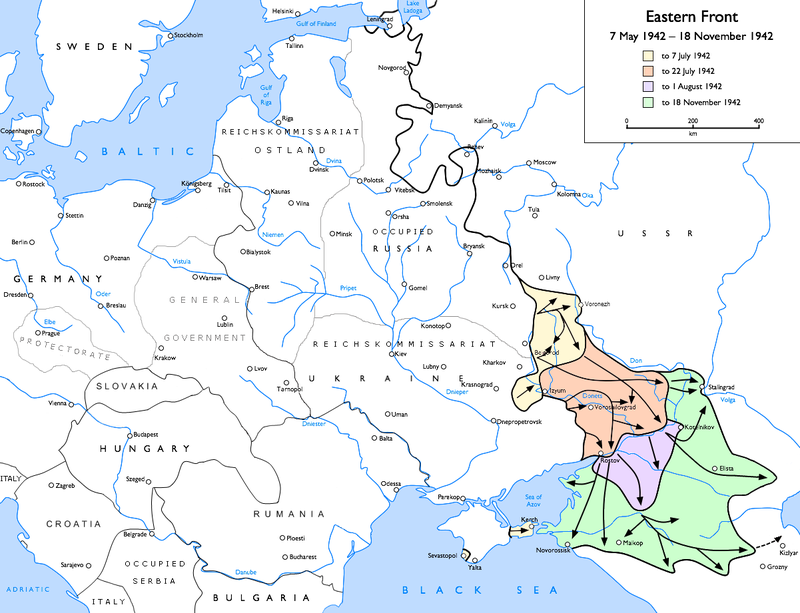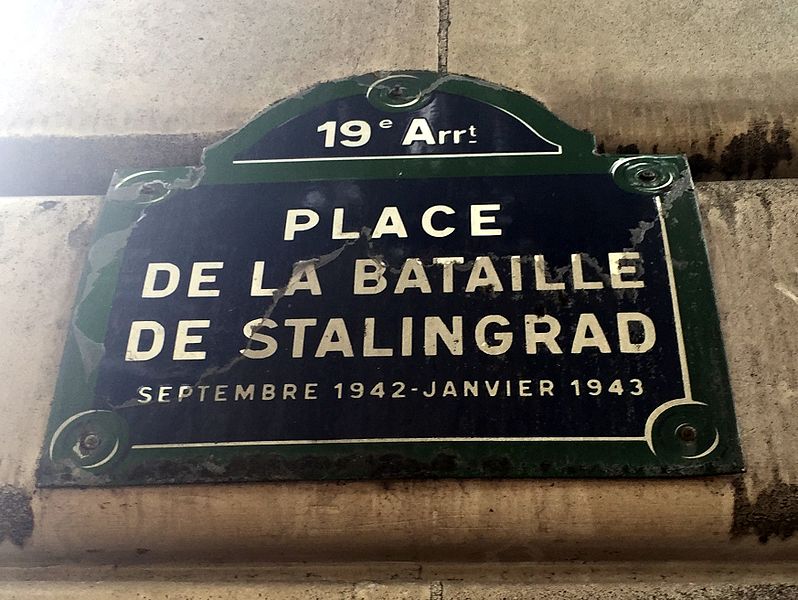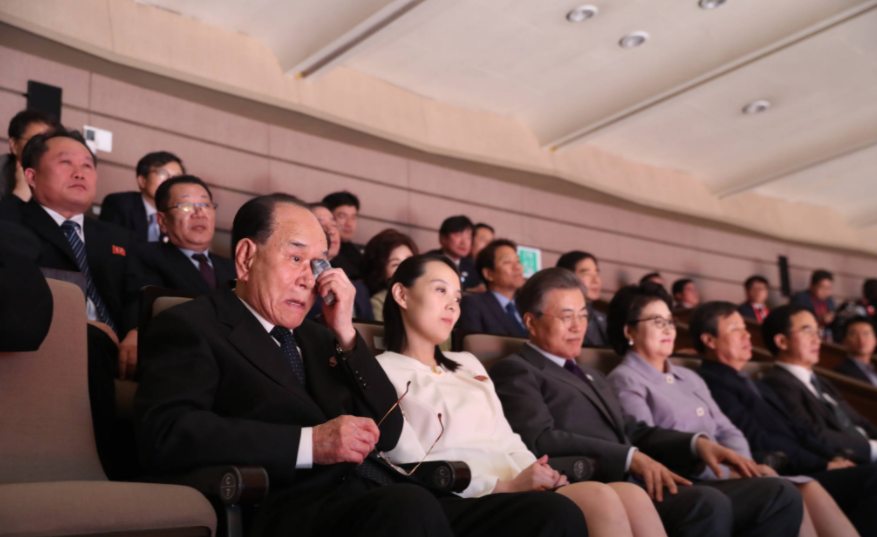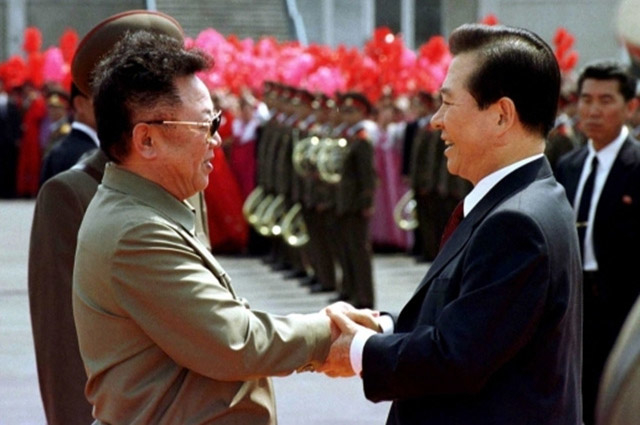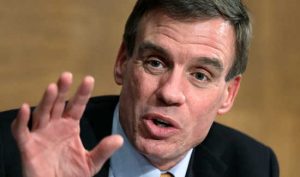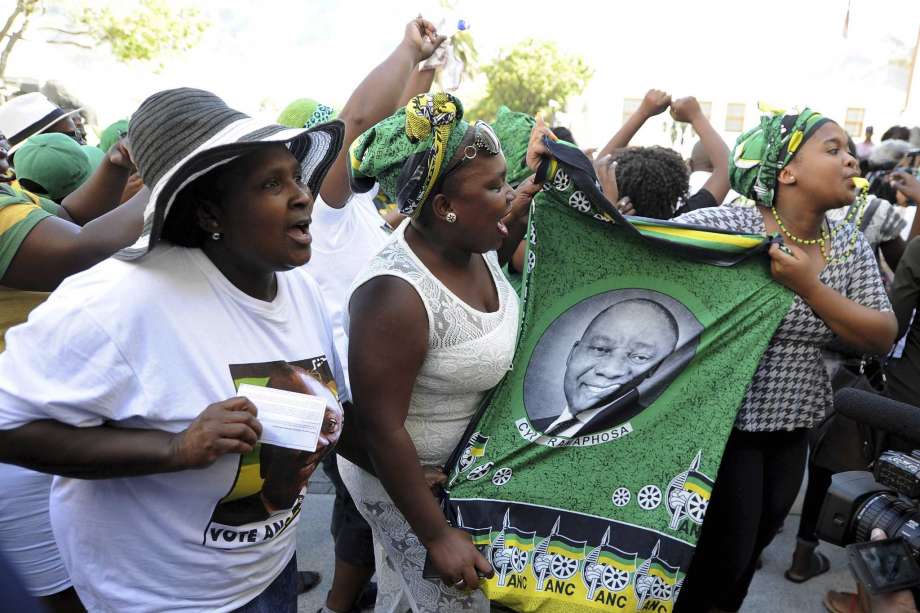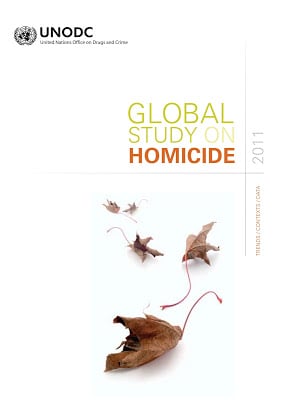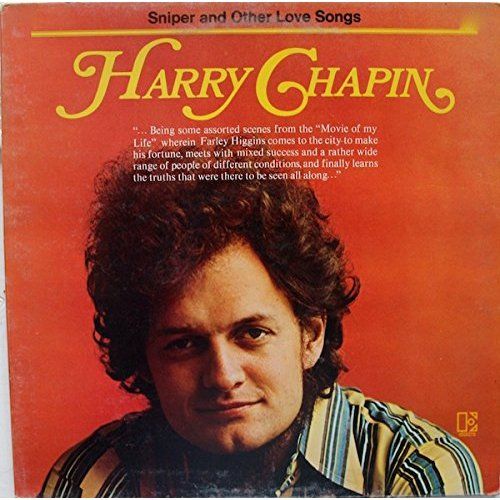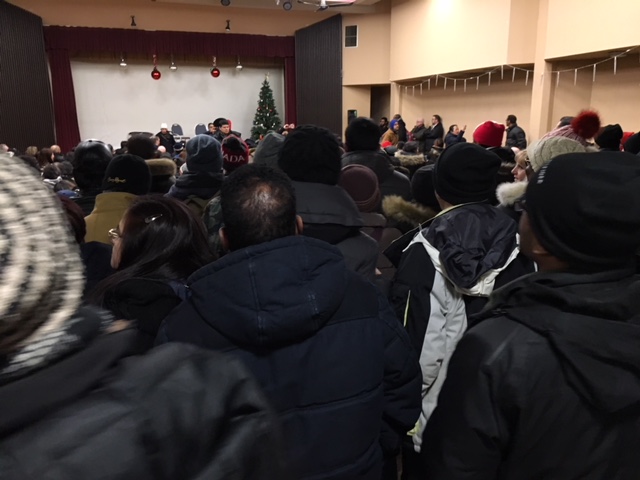Framework of Research/Analysis
US’ President Donald Trump’s US’ Afghanistan War Policy, announced towards the end of August 2017, after much prolonged deliberation, basically had the following main points (1) :
- The American people are weary of war without victory, and “I share the American people’s frustration”. Trump said his original instinct was to pull out of Afghanistan, but now believes a rapid exit would create a vacuum that Islamic militants would fill.
- Despite reports that Trump would announce a 4000-strong troop increase, the president said he would not “talk about numbers of troops or our plans for further military activities”. “I will not say when we are going to attack but attack we will.”
- Victory in Afghanistan will mean “attacking our enemies” and “obliterating” the Islamic State group. Trump also vowed to crush al-Qaeda, prevent the Taliban from taking over the country, and stop terror attacks against Americans.
- The US will continue to work with the Afghan government, “however, our commitment is not unlimited, and our support is not a blank cheque”. Trump also insisted the United States would not engage in “nation-building”. “We are killing terrorists,” he said.
- The US “can no longer be silent” about terrorist safe havens in Pakistan. Trump said Pakistan often gives sanctuary to “agents of chaos, violence and terror”, the Taliban and other groups who pose a threat to the region and beyond.
- The US wants India to help more in Afghanistan, especially in the areas of economic assistance and development”.
When viewed critically, this supposedly ‘new’ policy appears to be the continuation of the same old policy, which has been continuing with occasional changes in its momentum during the last over 16 years. President Bush started with the ferocity of spreading devastation in Afghanistan, then there was talk of nation building of Afghans and formation of a democratic Afghan government, followed again by a ‘surge’ of US’ troops, then there was again the talk / plan of gradual withdrawal of US’ troops, and now again there is the plan of inducting additional US’ troops with additional powers and non-commitment for withdrawal of US’ military. For the unwary, on the face of it, this US’ jigsaw policy ‘turn-arounds’ appear to be mind-boggling. However, a careful understanding of certain conceptual, policy, and ground realities aspects related to the US’ Afghanistan War Policy from the beginning till now, brings forth the required clarity and helps in discernment of the latent actualities.
These aspects are:
(a) a clear grasp of the origin of US’ concept of geopolitics and its prevailing version,
(b) a critical examination of US’ Afghanistan War objectives, as announced and oft-amended by the successive US’ governments,
(c) identification of the real US’ Afghanistan War objectives,
(d) human cost of this war,
(e) the extremely inhuman facet of US’ Drone War Strategy as part of its Afghanistan War Policy,
(f) economic cost of this war,
(g) resultant emergence of ‘mass human hatred’ of the people of targeted countries against US and its War on Terror allies,
(h) US’ real concern about stability or instability in Afghanistan, and
(i) the identified related probabilities / possibilities in the projected time-frame.
Origin of US’ Concept of Geopolitics and its Prevailing Version
A clear understanding of the concept reflected by the term ‘Geopolitics’ and its misconstrued versions as that of US’, is essential to grasp the broader picture of the prevailing US’ external domineering, including the military invasions or / and interventions in different parts of the world including Afghanistan. With such clear grasp of the broader picture it will then be easy to read through the US’ Afghanistan War Policy, identifying its latent actualities, as also the indicated related possibilities in the projected timeframe.
From the academic concept point of view, Geopolitics is basically considered to be the “method of political analysis, popular in Central Europe during the first half of the 20th century that emphasized the role played by geography in international relations”. This term was first used in 1916 by Rudolf Kjeflen, a Swedish political scientist (2). From that stand point it was, and still remains, a beneficial field of specialised study. However, its misconstrued versions, through which many major powers justify their external domineering, including military action to occupy or dominate other countries to exploit their resources, were / are certainly farcical. Factually, world history – ancient and medieval – was almost replete with such acts. However, the phenomenon of ‘institutionalising’ such acts as national policy, which germinated the subsequent misconstrued versions of geopolitics, commenced from 19th century. The generally known example in that regard is that of the Nazi Germany’s concept of ‘Lebensraum’.
In the case of the US, history of the official development and application of similar misconstrued versions of geopolitics is fairly well-recorded from the early 19th century. One such version was ‘Monroe Doctrine’. It was officially promulgated by the then President Monroe on 2 December 1823, who declared his government’s assertion of unilaterally expanding its ‘overlord-ship’ over both the northern and southern continents of America, to the exclusion of all other European powers / countries. It is worth noting that this doctrine has not yet faded out, though it has been ‘re-modeled/re-engineered’ by US’ authorities when required to serve the US’ expansionist design in the changed circumstances. That aspect is evidently clear from the elaboration provided by Rear Admiral Colby N. Chester, US Navy, as mentioned in the historical records (3) of America of July 1914. He asserted:
“The Monroe Doctrine is the cardinal principle of the foreign policy of the United States. It has been so construed for nearly one hundred years of our national history, and it so remains today, in spite of some statements that have been made to the contrary” (4).
And, in view of the changed geopolitical environment of that time, he also propounded the ‘re-modeling’ of the original doctrine to include US’ ‘right’ of expanding its domineering across the oceanic expanses (5).
Yet another similar concept, in tune with Monroe Doctrine, which is much more discernible in US’ policies in the present day environment, is the theory of ‘Manifest Destiny’. It originated in 1845, and is still operative with certain modifications and under different names. The concept of ‘Manifest Destiny’ is considered to have initially espoused the idea that America had to expand in the North American continent. However, research has established that the original concept, as also it’s subsequent ‘re-modeled’ versions under different ‘slogan titles’ till the present times, clearly included / still include the conceptual ingredients of US’ superiority notions of religion, race, and culture, and the dominant urge of expansionism and imperialism.
Donald M. Scott, Professor of History Queens College and the Graduate Center of the City University of New York, has published his scholarly essay about the realities of this theory and it’s ‘re-modeled’ versions. His essay is titled ‘The Religious Origins of Manifest Destiny’. Some of the excerpts of his essay, which succinctly clarify these mentioned aspects of the initial and subsequent ‘models’ of this US’ concept, are:
“In 1845, an unsigned article in a popular American journal, a long standing Jacksonian publication, the Democratic Review, issued an unmistakable call for American expansionism. Focusing mainly on bringing the Republic of Texas into the union, it declared that expansion represented the fulfillment of our manifest destiny to overspread the continent allotted by Providence for the free development of our yearly multiplying millions.”…
“Manifest Destiny was also clearly a racial doctrine of white supremacy that granted no native American or nonwhite claims to any permanent possession of the lands on the North American continent and justified white American expropriation of Indian lands… ”.
“It also was firmly anchored in a long standing and deep sense of a special and unique American Destiny, the belief that in the words of historian Conrad Cherry, “America is a nation called to a special destiny by God.”…
“It is also the constellation of ideas that has informed American nationalism and its actions at home and abroad to this day. … President Woodrow Wilson invoked it to call Americans to fight to make the world “safe for democracy”, as did President Franklin Roosevelt, when in World War II he rallied the American public behind the war against Fascist and Nazi Europeans and imperial Japan….
The sense of American uniqueness and mission also underlay John F. Kennedy’s inaugural address. And President George W. Bush, considering himself to be an agent of Divine will, has defended his policies in Iraq by invoking the idea that it is America’s duty and destiny to conquer terrorism and to secure democracy for Iraq and help spread it to other nations of the Middle East.” …. and, “Not surprisingly, however, it remained for Abraham Lincoln to provide the most complex but nonetheless clear statement of the idea that America has a sacred duty to itself and to the world to preserve and protect liberty and democracy.”(6)
This foregoing elaboration given by Professor Donald M. Scott suffices to establish that all such concepts and theories of US, like ‘Monroe Doctrine’, ‘Manifest Destiny’, etc., till the more recent concepts like ‘War on Terror’ and ‘Pivot Asia’, were / are basically the intentionally misconstrued versions of geopolitics, with the real ingredients as mentioned by him.
At this juncture it is also important to note that, particularly since 1990, NATO’s formulation and application of strategic and military doctrines have mostly been dominated by US, due to many reasons already known. Hence, for most part, these doctrines basically remain within the framework of US’ aforementioned doctrines, thus effectually serving US’ interests. That commonly known fact has also been highlighted by Rick Rozoff, who reported about the strategic concerns confronting NATO, as announced by NATO Secretary General Anders Fogh Rasmussen (7).
In that context, in his article “NATO: Global Military Bloc Finalizes 21st Century Strategic Doctrine” (8) he also reported and commented on the proceedings of NATO’s meeting of first week of May 2010 relating to the formulation of NATO’s strategic and military doctrines for 21st century. The Bloc’s Military Committee assembled the defence chiefs of 49 nations supplying troops for the war in Afghanistan, and US’ Vice President Joseph Biden visited the Alliance’s headquarters.
Reporting about that NATO meeting, Rick Rozoff has highlighted that despite the assurance of NATO Secretary General Rasmussen that the Alliance’s new Strategic Concept would be finalised on the basis of the careful examination of the report of NATO’s Group of Experts by all NATO member states, all the important elements of the Strategic Concept were decided upon years ago in Washington, D.C.; and that, those included
- a continuation and escalation of the war in South Asia, in both Afghanistan and Pakistan; placing all NATO member states under a joint U.S.-NATO interceptor missile shield;
- retaining American tactical nuclear weapons on air bases in European nations; expanding the bloc even further into the Balkans and nations of the former Soviet Union;
- extending ad infinitum naval surveillance and interdiction operations in the Mediterranean Sea, the Gulf of Aden and the Indian Ocean, encompassing many of the world’s most vital and strategic shipping lanes and naval choke points;
- penetrating deeper into the Middle East and Africa through military partnerships and training and other assistance programs.
However, in the context of the afore-mentioned NATO’s sort of subservience to US’ geopolitical policies, the fact should also not be lost sight that for some years now there are also signs of gradually decreasing US’ influence on its major NATO allies to support US’ geopolitical policies in certain cases. That factor certainly bears high significance in any endeavour for discerning the geopolitical probabilities in the projected timeframe.
Afghanistan War Objectives Announced by US Government
The first declaration, regarding the commencement of the US’ military invasion of Afghanistan, made by US President Mr. Bush was that this war was a ‘Crusade’ i.e. the holy war of Christians against Muslims. That clearly reflected the religious and racial ingredients of US’ Afghanistan War Policy. That inference is based upon two aspects; (a) the afore-mentioned research findings of Professor Donald M. Scott of Queens College and the Graduate Center of the City University of New York in his essay ‘The Religious Origins of Manifest Destiny’; and (b) the unmistakable clarity of that declaration of the then President of US who announced the commencement of Afghanistan War.
However, not much later the US President changed the underlying reason of US’ Afghanistan War from ‘Crusade’ to ‘War on Terror’. It was declared by US government that Al-Quaeda located in Afghanistan had planned the terrorist 9/11 attack on the Twin Towers; hence the US’ military invasion of Afghanistan to conduct War on Terror with the objectives of (a) overthrowing the Al-Quaeda- supporting Taliban government, and (b) destruction of Al-Quaeda in Afghanistan.
This US’ contention about the basic cause of launching its War on Terror on Afghanistan, however, has since long been challenged for its credibility due to certain aspects. Three of those are:
(a) The theories, usually termed conspiracy theories, still remain in media that the Twin Towers’ collapse and complete destruction was not merely due to the two aircrafts crashing into the towers, but basically due to the bombs planted in the towers. Just to quote one such publication is the article titled “Was 9/11 victim blown out of tower BEFORE collapse? Conspiracy theorists claim video ‘proves bombs were planted’ in attack”, published by UK-based ‘Mirror’ on 11 September 2017. This article highlights that “Conspiracy theorists claim grainy footage apparently taken during the 9/11 attacks proves bombs were planted in the World Trade Center”; and “They claim the blast occurred several floors below the point where a plane was smashed into the building by hijackers. The force of the explosion propels what looks like a body out of the window” (9).
(b) As well-known, Al-Qaeda was created, organised , equipped and trained by US’ CIA to fight against the pro-Soviet government in Kabul; whereas Afghanistan Taliban was an indigenously raised movement which stood up to fight the renegade Mujahedeen groups who were making life miserable for common Afghan people with loot, plunder, and other heinous crimes. There has never been any evidence of the Taliban government providing military support to Al-Quaeda.
(c) None of the men who were declared to be responsible for the 9/11 attack were from Afghanistan.
This elaboration of these three aspects is certainly weighty a negation of US’ claimed basic reason for launching the “War on Terror” on Afghanistan. Besides that, even if the two stated US’ objectives for this war are taken into consideration, it remains to be answered as to why the US is continuing to retain its military occupation of Afghanistan when the Taliban government was quickly overthrown by invading US / NATO military, and destruction of the US-created Al-Quaeda also did not take long.
The next in line was the US-stated objective/concern of capturing or killing the Al-Quaeda leader Osama bin Laden, who was once considered by the US as its most respected and valued partner. Even if the US had started treating him as an enemy due to any reason, it remained certainly un-explained as to why a military high-tech equipped powerful military force, over 100,000 strong at certain juncture, was required to stay in Afghanistan just to capture or kill one enemy person. Besides that, the fact remains un-explained that even after the much US-propagated killing of Osama bin Laden in Abottabad, the US military occupation of Afghanistan still continues.
The other Afghanistan War objectives announced by US included such objectives like nation building of Afghans, introduction of American values (freedom, equality, democracy), economic development, stabilisation, and establishment of a democratic government in Afghanistan, etc.
The fact that the US did not succeed in attaining even these objectives in Afghanistan, as also the reasons for that, are covered in many publications. However, mention of two of the credible sources of US should suffice. One is Mr. Ed Corcoran, who was a strategic analyst at the U.S. Army War College, where he chaired studies for the Office of the Deputy Chief of Operations; and the other is Mr. John Sopko, the US’ Inspector General for Afghanistan Reconstruction (SIGAR).
An article of Mr. Ed Corcoran was published in ‘Foreign Policy in Focus’, on 10 April 2016. Two of the extracts of his article are worth noting, i.e.:
“The distressing security situation in Afghanistan is a direct result of the American failure to promote economic development and stabilization, despite 14 years of “support” and perhaps a trillion dollars. ———- In hindsight, the bias against nation-building in the aftermath of removing the Taliban government was a strategic blunder. Instead of stabilizing Afghanistan, the United States turned and destabilized Iraq, helping bring turmoil to the entire region”;
and
“The challenge of radical Islam is a direct result of the failure to demonstrate the potential of basic American values (freedom, equality, democracy) to lead to peaceful and prosperous lives, to inspire the youth of the region. In fact, American involvement in Afghanistan, if anything, has demonstrated the opposite, that American values lead to corruption, poverty, and insecurity. This failure is not only undermining efforts in Afghanistan. It has inspired an anti-Western movement that serves as a foundation for radical Islamic propaganda. The IS alternative rejects Western values as hollow and empty and appeals to a regional youth bulge that is both frustrated and adrift. This strongly anti-Western ideology gets wide support, even within Western societies despite its extreme brutality”. (10)
Mr. John Sopko (SIGAR)’s report/ remarks have been published by Financial Times of 14 September 2016. Two of the extracts of that report amply clarify that US authorities factually never tried to help the Afghans to evolve and organise a government of their own which could have at least a semblance of a democratic government serving the Afghans with good governance. US authorities instead kept on trying to plant a ‘pliant’ government even including the ‘power-wielding’ but unsavoury war lords. Those extracts are:
“John Sopko, the inspector-general for Afghanistan reconstruction, said on Wednesday that the huge influx of foreign assistance since 2001, poor oversight and a willingness to work with “unsavoury” characters had created a situation of “endemic corruption” that was an “existential threat” to the country”. … “Mr. Sopko said that the US had “collaborated with abusive and corrupt warlords” who had gained positions of authority in the Afghan government and were able to “dip their hands into the streams of cash pouring into a small and fragile economy”. (11)
Real US’ Afghanistan War objectives
The objectives announced by US having thus been found farcical and unable to explain the continuing US’ military occupation of Afghanistan; a careful identification of the real US’ Afghanistan War objectives not only clarify the reason for the continuing military occupation of the country by US, but also help in discerning certain projected- time scenario. Three of those real objectives are identified.
First, to understand the real motive of US’ military occupation of Afghanistan right from the beginning, a look at the following map is essential:

From this map it becomes amply evident that geographically Afghanistan is virtually a ‘strategic fulcrum’ in this region; and from the ‘politico-military stranglehold’ of this ‘strategic fulcrum’ US can geo-strategically gravitate towards Iran, Pakistan, China, Central Asia, and Russia. Besides posing any sort of missile etc threats, US can also utilise this Afghanistan launch pad to create internal disorder / instability through its CIA elements in the selected areas of these countries.
Second, There are some reports that US plans to remain in Afghanistan to exploit over a trillion USD worth of the un-explored mineral deposits in that country. That report cannot be denied; and in that context a letter of Edwina Cloherty of Jamestown published on 11 September 2017 by ‘Providence Journal’ conveys the feelings of the people in this regard. The extract of that letter worth noting is:
“Candidate Trump vowed to get the U.S. out of Afghanistan. But that must have been before he realized that the Taliban control vast areas of rare mineral wealth the West covets. I read several different news accounts of Trump’s speech and listened to it myself. He made clear his plan to “participate in economic development (in Afghanistan) to help defray the costs of the war.” That, to me, tells it all — let’s gets those rare minerals that belong to Afghanistan. After all, to the victors go the spoils. “And we will win in the end!” said Mr. Trump. Bush’s Iraq war was for oil, yet the media went right along with Bush’s fabrications about protecting the U.S. from Saddam Hussein’s weapons of mass destruction. Where is the media now?”(13)
However, it should also be kept in mind that exploration and exploitation of those mineral deposits will require huge work of development of the related infrastructure and other facilities.
Third, for long US has been designing to remove the nuclear weapon capability possessed by the only Muslim country, i.e. Pakistan. US’ ‘stranglehold’ on Afghanistan provides US the geostrategic capability of launching US’ CIA-Indian RAW combine proxy terrorists in Pakistan to spread terror-chaos in the country, with the plan of destabilising Pakistan to the extent where US could compel Pakistan to give up its nuclear arsenal and facilities apparently in the name of UN control. This US threat to Pakistan has already been discussed in Pakistan’s national media.
Human Cost of US’ Afghanistan War
As mentioned earlier when, after 9/11 Twin Tower destruction, US’ President Mr. Bush announced US’ military invasion of Afghanistan he called it the ‘Crusade’, but later he changed that war objective as ‘War on Terror’.
Factually this US’ War on Terror has never been limited to Afghanistan; its spread also covered / still covers Iraq, Yemen, and certain other parts of Asia and Africa. Pakistan became embroiled in this war’s devastation when under intense US’ pressure it accepted US’ demand of providing its air bases and other facilities to the US’ forces invading Afghanistan. That resulted in the retaliatory terror attacks of high magnitude in Pakistan by the anti-US militant groups; and that phenomenon still remains the serious threat to Pakistan’s internal security.
The real objective and nature of this US War on Terror has amply been clarified in one of the reviews published by Joseph Michael Gratale, PhD who is Professor at the American College of Thessaloniki (ACT) (14). That review has been published by the European Journal of American Studies (Reviews 2012-1 ), titled “Walberg, Eric. Postmodern Imperialism: Geopolitics and the Great Games”; in which Joseph Michael Gratale asserts,
“1Recent history for even the casual observer of international affairs has been plagued by wars and conflicts in specific regions of the world. The wars in Central Asia and the Middle East, Afghanistan and Iraq respectively, seem to indicate the latest machinations in the imperial designs of the USA”(15).
The countries targeted by US and its allies in US’ War on Terror have suffered / are still suffering colossal human costs. Howler, this paper mainly focuses on the cases of Afghanistan and Pakistan – the two targets of US’ Afghanistan War Policy / Strategy. Many publications on this aspect are available; however, mention of / quotation from just few of the more credible reports / papers would suffice to highlight the extremely brutal and widespread massive human miseries wrought on these two countries by US and its Afghanistan War allies. Some of those credible reports / papers, besides others, are:
(a) Costs of War project, based at Brown University’s Watson Institute for International and Public Affairs, published on 9 August 2016 (16).
(b) “Body Count: Casualty Figures after 10 Years of the War on Terror”, First international edition – Washington DC, Berlin, Ottawa – March 2015 (17) released by the Nobel Prize-winning International Physicians for the Prevention of Nuclear War (IPPNW) (18), along with Physicians for Social Responsibility (19) and Physicians for Global Survival (20).
(c) “Fatalities in Terrorist Violence in Pakistan 2003-2017, published by South Asia Terrorism Portal, covering period up to 10 September 2017. (21)
In the case of Afghanistan, the publication dated 9 August 2916 of Brown University’s Cost of War Project testifies that: “An estimated 31,000 Afghan civilians have been killed in direct violence since October 2001”; “Traumatic amputations constitute a significant burden of the war for Afghan civilians, with the Red Cross and Handicap International together assisting more than 2,600 people who had suffered limb amputations in 2015; and “Between January 1 and April 30, 2016, 117,976 people in 24 out of 34 provinces in Afghanistan fled their homes”. “Nearly 1 million Afghans are internally displaced, and an additional 2.6 million Afghans are refugees in more than 70 countries”. (22)
According to another report, “Based on the numbers below, in the Afghan Defense and Interior Ministry section figures, by December 31, 2014, 21,008 soldiers and policemen had been killed since the start of the war” (23).
The aforementioned publication Body Count Casualty Figures After 10 Years of the War on Terror, mentions in the Afghanistan Summary (October 2001 until the end/. of 2013); “Civilians and Combatants Directly Killed, Excess deaths incl. , Afghan Civilians 106,000 – 170,000, Journalists 22, NGO Workers 281, Afghan Security Forces 15,000, Private U.S. Security Forces 3,000, ISAF and OEF Soldiers 3,409, Civilian employees of the US government 1,700, “Taliban” 55,000, Total ~ 200,000”(24).
Before going further to the case of Pakistan, it may be worth quoting some extracts of the executive summary (p. 15) of the aforementioned publication “Body Count: Casualty Figures after 10 Years of the War on Terror”, First international edition – Washington DC, Berlin, Ottawa – March 2015, to highlight the extensive in-depth research and the purpose of this publication. Some of those extracts are:
(a) “The purpose of this investigation is to provide as realistic an estimate as possible of the total body count in the three main war zones Iraq, Afghanistan and Pakistan during 12 years of ‘war on terrorism’. An extensive review has been made of the major studies and data published on the numbers of victims in these countries. This paper draws on additional information such as reports and statistics on military offensives and examines their completeness and plausibility”.
(b) “This investigation comes to the conclusion that the war has, directly or indirectly, killed around 1 million people in Iraq, 220,000 in Afghanistan and 80,000 in Pakistan, i.e. a total of around 1.3 million. Not included in this figure are further war zones such as Yemen. The figure is approximately 10 times greater than that of which the public, experts and decision makers are aware of and propagated by the media and major NGOs. And this is only a conservative estimate. The total number of deaths in the three countries named above could also be in excess of 2 million, whereas a figure below 1 million is extremely unlikely”
(c) “Decisive for the publishers of this paper is not the exact number of victims, but their order of magnitude. They believe it crucial from the humanitarian aspect, as well as in the interests of peace, that the public will become aware of this magnitude and that those responsible in governments and parliaments are held accountable”. (25)
In the case of Pakistan, the same publication also asserts that “The war in Pakistan is therefore a consequence of the U.S./NATO war in Afghanistan. It began in 2004 with the massive advance of the Pakistani military against Al-Qaeda hide-outs and “Taliban” in southern Waziristan. The initial hope that this could contain the war has turned into its opposite. The war intensified, terrorist reprisals increased, and the war spread to other areas of Pakistan”. (26)
The publication also provides Pakistan Summary (2004 until the end of 2013) Civilians and Combatants Directly Killed. Pakistani civilians 48,504, Journalists killed 45, Civilians killed by drones 416 – 951, Pakistani security forces 5,498, Militants 26,862, Total 81,325 – 81,860. (27)
The latest (up to 10 September 2017) fatalities in terrorist violence, spread as a result of US’ Afghanistan War Policy, published by the aforementioned South Asia Terrorism Portal shows that during the period 2003 – 2017, Pakistani security forces has suffered 6,817 fatalities while the terrorist / insurgents suffered 33,733. (28).
As for the miserable problem of the internally displaced persons (IDPs) due to terror attacks, counter-terrorism operations of security forces, and drone attacks, etc. a research paper published by Journal of the Research Society of Pakistan, JRSP, Vol. 53, no. 1, January-June 2016, is of note. It mentions, “Nonetheless, a major wave of terrorism surfaced after 2002. Since then, terrorist attacks have indiscriminately targeted places like market places, hotels, religious and social gatherings, schools, mosques, public venues etc. As this trend has continued for well over a decade, it is timely to access the impacts of terrorism on the country and the future generation – youth” (29). Its Table 1: Data of IDPs (February 2015) shows the data of IDPs of FATA area (the tribal area of Pakistan bordering Afghanistan). It shows that out of 614, 934 registered IDPs (157, 806 families) only 309, 171 could return during the period despite the best government efforts. (30)
Inhuman Facet of US’ Drone War Strategy as Part of Its Afghanistan War Policy
It is only unfortunate that, except for Pakistan, the horrific inhuman facet of US. ‘Drone War strategy’ as part of its Afghanistan War Strategy / Policy is still not known to the majority of the public of US, its War allies and other countries. In that context one of my short research paper titled “The Intricate Dynamics of US’ Drone War Strategy” was published in two installments in the Frontier Post on 17 and 18 July 2012 and in Eurasia Review on 25 September 2012. Some extracts from that paper are given below to testify the horrifying realities of US’ Drone War Strategy:
(a) “However, what is of significance to note is the pattern and scale of escalation of US’ ‘drone brutality’. In that context it is also important to note that the casualty and destruction data given by the Western sources is usually quite lesser as compared to the ground realities, probably due to their insufficient access to the drone-attacked area. However, even that data presents the real face of the ‘horrors of the US Drone War Strategy’. The data presented in the table below is compiled from the aforementioned essay of Leila Hudson, et.al., of Patrick Dehan and the data of The Bureau of Investigative Journalism (UK). The following table shows the number of people killed by the drones during the period 2002 – 2010. Number of people killed in drone attacks during the period 2011 – Mid 2012 (about 18 months) is in addition to this data.

(b) “The drone attacks are launched to track and extra-judicially kill those who are ‘merely suspected’ to be working against US’ interests, on the orders of President Obama who is US’ official approver of the target-kill list; and the ‘kill orders’ are executed on the whims of those US’ CIA / military persons who try to locate the ‘suspects’ on their screens sitting thousands of nautical miles away in their country – no wonder, therefore, that many a times they have targeted and killed scores of men, women and children even in the funeral processions, marriage ceremonies, and the social assembly of locals in their traditional ‘Jirga’, etc. That is the ‘system of justice of US’, collectively delivered to the innocent Muslim men, women and children!”
(c) “The ratio of killing of the ‘merely suspected’ : ‘not even suspected’ has risen from the initial 1 : 5 to the horrific 1 : 147 or above; that is, about 150 of those who are not even suspected are killed by US in the kill hunt of just one suspected person”. (31)
It is worth noting that these horrific inhuman realities about the US’ Drone War Strategy, mentioned in my research paper in 2012, were re-confirmed in 2015 in the aforementioned credible publication “Body Count: Casualty Figures after 10 Years of the War on Terror”, First international edition – Washington DC, Berlin, Ottawa – March 2015”. Some of its extracts given below testify those realities:
(a) “Under President Barack Obama the use of armed drones abroad massively increased. Both the administration and the opposition in Washington have worked hand in hand to block any debate about the legitimacy and the mounting number of civilian victims of these extra-legal attacks”. (32)
(b) “In reality, the term generally used for this operation, “targeted killings,” is already a deliberate deception: Only in a few exceptional cases are people murdered because, according to the assessment of the U.S. administration, they hold an important position in the hierarchy of al-Qaeda or any other group of local insurgents. A study on Pakistan by the London-based Bureau of Investigative Journalism published in August 2011 concluded that only around 5% of those killed are even known by name. This means that overwhelmingly the attacks are entirely random. In the parlance of U.S. institutions, this practice is accurately and graphically described as “crowd killing”: People have to die because they happen to be in the midst of a group or crowd of people whom the drone operators consider to be a worthy target. —– Festive Parties as Target. For these “crowd killings” the CIA, which directs the attacks, prefers to exploit collective events. These can be collective meals on festive occasions, often during Ramadan or on other religious holidays, and also funerals”. (33)
Economic Cost of This War
In the case of Afghanistan a number of publications incorrectly assert that Afghanistan’s economy has been improving since the military occupation of the country by US. As an example, one of such publications asserts “According to the International Monetary Fund, the Afghan economy grew 20% in the fiscal year ending in March 2004, after expanding 30% in the previous 12 months (34)”; and another report by Afghanistan Investment Support Agency dated March 2012 claims “The economy has grown at a remarkable pace since 2003; average growth rate over the period 2003 – 2011 has been 11.2 percent. Only few countries in the region have experienced a growth rate above 10 percent in the last decade. For Afghanistan, this is a remarkable achievement despite the fact that serious security challenges exist in the country. Real GDP growth is estimated at 5.7 percent in 2011/12 and is projected to increase to 7.1 percent in 2012/13. Income per capita is estimated by the World Bank at US $501, which puts Afghanistan in the 175th position among 190 countries in the World”. (35)
It is a known fact that the economic indicators of a country’s economy – GDP, GNP, etc – are often ‘manipulated / engineered’ to paint the ‘desired’ picture by certain governments, organisations, etc. It is therefore better to check the social indicators of the economy of the country, because these show the ground realities related to the application of the ‘actual’ state of the country’s economy; and such ground realities are hard to be ‘manipulated / engineered’.
In that context, many credible reports / research papers are available which show that economy of Afghanistan is actually in a critically problematic state. One of the publication of World Bank (36) highlights that “Despite 6.9% GDP growth in 2007-08 to 2011-12, 36% of Afghans remained poor in 2007-08 and one in 3 Afghans couldn’t afford to cover their basic needs in 2012; Growth widened the gap between the rich and the poor, as the poor saw a decline in household consumption and continued to lack access to jobs and basic services; patterns of growth in Afghanistan widened the gap between the rich and the poor; Lack of education, livelihoods and access to basic services contribute to Afghan poverty”. Another publication of World Bank (37) brings to fore “Poverty increased substantially from 36 percent in 2011-12 to 39 percent in 2013-14. As a result, 1.3 million more Afghans were unable to satisfy their basic needs; Unemployment reached 22.6 percent in 2013-14 as fewer jobs were created and existing ones from the pre-transition phase were destroyed, hitting mostly youth, rural populations, and illiterate workers; Progress in human development outcomes slowed down and girls’ primary school attendance declined markedly, especially in rural and conflict-affected areas; Moreover, the diffusion and intensification of conflict helps perpetuate poverty down to future generations as children miss school and more families flee their homes”. Similarly a BBC report (38) also highlights that “Afghanistan’s biggest export is still opium – despite attempts to persuade farmers to diversify. 2013 was a record year and the country produces 90% of the world’s opium”.
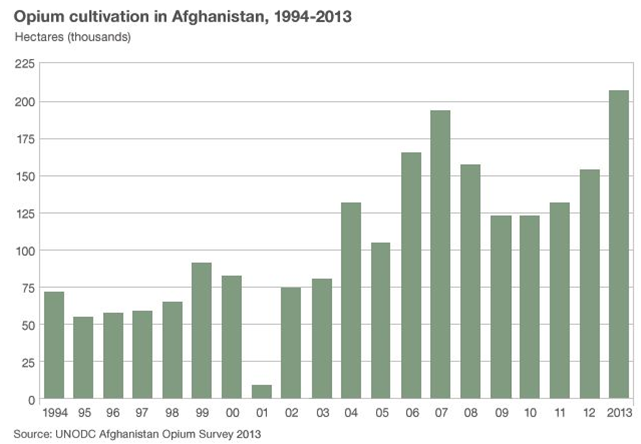
Source: BBC Report
The actual pathetic state of Afghanistan’s economy having thus been clarified, it is also important to note that because of their military invasion and occupation of Afghanistan, USSR and USA bear the sole responsibility of this devastation of Afghanistan’s economy and the resultant extreme misery to Afghan masses. Factually both the USSR and US devastated the then economy of Afghanistan which was in a developing mode at the time of their respective military invasion of that country. In that context, quotation from two credible sources of information suffices.
One is the Encyclopaedia Iranica, Originally Published: December 15, 1997. Last Updated: December 8, 2011. It mentions “Sustained growth in Afghanistan. From 1970 until the coup d’état in April 1978 by the combined Ḵalq and Parčam branches of the Communist Party (see COMMUNISM iv), followed by the Soviet invasion in December 1979, the Afghan economy experienced sustained high economic growth. Gross domestic product (GDP) rose at a rate of 4.5 percent annually in constant prices (Table 1). Major structural changes also occurred, as aggregate shares of output and employment declined in the agricultural and primary sectors and increased in manufacturing and service industries”. (39) (The in-text references in this quoted extract are those of Encyclopedia Iranica.)
The other is a well-researched paper titled ‘Impact of Soviet and US War on Afghan Society with special reference to Rural Life’ of 10 November 2012 by Dr. Imtiyaz Gul Khan history lecturer for the Dept. of Education, Govt. of J&K, which is noteworthy. (40)
Dr. Imtiyaz Gul Khan highlights that
“The infrastructural damage and human causalities continued during the Soviet occupation and, thereafter, the situation remains unabated in the post-9/11 scenario. In fact, its scale has widened with deployment of additional NATO forces and direct confrontation of the Pakistani army with the Taliban groups in Pakistan and at the Pak-Afghan borders”.
He then goes on to discuss the socio-economic devastation of Afghanistan and its masses wrought by USSR and then by USA.
On the other hand it is also worth noting that, after discussing the socio-economic devastation wrought on Afghanistan by USSR, Dr. Imtiyaz Gul Khan also explains the successful manner in which the Afghanistan Taliban government revived Afghanistan’s economy after the withdrawal of USSR from the country. In that context he asserts “No doubt, the overall economic situation stopped deteriorating in the first few years of the Taliban regime as inter-regional trade resumed in areas under their domain.
Agriculture recovered and cereal production rose in 1998 to levels close to those existing prior to the outbreak of the war in 1979-80. Livestock increased due to the presence of leftover unutilized grazing lands, and horticultural production grew due to the restoration of orchards.[71]
The Taliban announced suitable measure to improve agriculture and revive industrial units. In sequence, cereal production increased to 3.85 million tons in 1998,[72] almost 50% more than was recorded a year before in 1997.
The improvement followed political stability and repatriation of the villagers to their farm lands. Despite this improvement Afghanistan imported 750,000 tons of wheat to meet the food requirements of the city-dwellers.[73] Likewise, they announced concessions to businessmen for the promotion of trade as a boost to the economy.[75] Moreover, they encouraged foreign investment in Afghanistan, in fact, this was the only option to start new projects and revive unfinished ones”. (The in-text references given in this extract are of Dr. Imtiyaz Gul’s paper.)
Incidentally the BBC’s afore-given UNODC’s chart, showing Opium cultivation in Afghanistan 1994 – 2013, proves Dr. Imtiyaz Gul’s assertion that the Afghanistan Taliban regime was succeeding in reviving the USSR-devastated economy of their country when the US’ military invasion re-started the devastation.
From that UNODC chart it is evident that the Afghanistan Taliban regime had succeeded in bringing down the opium cultivation in their country well below ten thousand hectares by the year 2001, when their regime was overthrown by US’ military invasion and occupation of the country. Obviously that huge reduction of opium cultivation had become possible only because the Afghanistan Taliban regime, through their economic revival measures, provided better economic means to Afghan masses for earning their livelihood. And then onwards, the socio-economic devastation of Afghanistan because of US’ military occupation of the country is evident from the recorded fact that opium cultivation jumped up again to above two hundred thousand hectares, i.e. ninety percent of world’s opium.
The reason is obvious, i.e. the socio-economic devastation of Afghanistan, caused by US’ military occupation of the country has again deprived the Afghan masses of any other economic means for sustaining their livelihood – no wonder that the World Bank publication also highlights “Afghanistan’s biggest economic challenge is finding sustainable sources of growth”. (41)
In the case of Pakistan as quoted earlier in this paper the earlier-mentioned publication, “Body Count: Casualty Figures after 10 Years of the War on Terror”, First international edition – Washington DC, Berlin, Ottawa – March 2015, asserted “The war in Pakistan is therefore a consequence of the U.S./NATO war in Afghanistan. It began in 2004 with the massive advance of the Pakistani military against Al-Qaeda hide-outs and “Taliban” in southern Waziristan. The initial hope that this could contain the war has turned into its opposite. The war intensified, terrorist reprisals increased, and the war spread to other areas of Pakistan”. (42)
Much has been published about the colossal economic losses suffered / being suffered by Pakistan due the US’ War on Terror. In that context two of the survey reports published by Ministry of Finance Pakistan should suffice.
One is ‘Cost of War on Terror for Pakistan Economy – Ministry of finance’. It highlights “Pakistan’s economy is under pressure of the War on Terror intensifying for last four years in Afghanistan. Since 2006, the War has spread like a contagion into settled areas of Pakistan that has so far, cost the country more than 35,000 citizens, 3500 security personnel, destruction of infrastructure, internal migration of millions of people from parts of northwestern Pakistan, erosions of investment climate, nose diving of production and growing unemployment and above all brought economic activity to a virtual standstill in many part of the country. Pakistan had never witnessed such devastating social and economic upheaval in its industry, even after dismemberment of the country by direct war”. (43)
The other is ‘Impact of War in Afghanistan and Ensuing Terrorism on Pakistan’s Economy’. It mentions “During the last 14 years, the direct and indirect cost incurred by Pakistan due to incidents of terrorism amounted to US$ 118.31 billion equivalent to Rs. 9869.16 billion. Detail is given in Table 2”. Data of that Table 2 is given below:
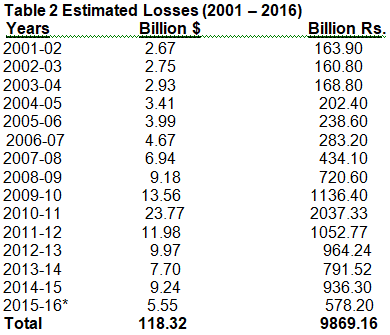
(*Estimated on the basis of 9 months actual data. Source: M/o Finance, M/o Interior, M/o Commerce, M/o Foreign Affairs Joint Ministerial Group) (44)
It is also worth noting that an AFP report published by Dawn on 19 November 2016 quoting a report by the State Bank of Pakistan about this amount of “$118.3 bn in direct and indirect losses” suffered by Pakistan in US’ War on Terror, also mentions that “A Coalition Support Fund was approved by the US to support Pakistan in the war, with an annual release of around $1bn since 2002. By last year Pakistan had received a total of $14bn”! (45)
Resultant Emergence of ‘Mass Human Hatred’ Against US and its War on Terror Allies
Much published material is available relating to the phenomenon of growing anti-US sentiments in different parts of the world. It is mostly titled as ‘Anti-Americanism’; and there are varying theories about the causes of this phenomenon – including historical background, cultural differences, US’ foreign policy impinging upon other countries, etc. However, there is certainly a significant difference in the causes and the gravity of such anti-US sentiments prevailing in Europe and those countries which have not been subject to US’ militarism, as compared to those countries which have suffered / are suffering from the brutality of US’ militarism. In the latter case US’ militarism includes US’ covert actions for regime change or destabilisation of the target country for its political subjugation, or / and US’ military invasion(s) of such countries.
In the case of Europe, the causes of Anti-Americanism have been amply summarised by Alida Tomja, University “Aleksandër Moisiu”, Durrës, Albani, in the article titled “Anti-Americanism in Europe: Causes and Consequences”. The author highlights “Andrew Kohut, based on the data of “Pew Global Attitudes Project,” found four aspects, which are the central reasons that have led to grow anti-Americanism worldwide and specifically in Europe (Kohut 2007: 5-7):
- A general perception that the U.S. acts unilaterally in the international arena, failing to take into account the interests of other countries when it makes foreign policy decisions;
- A broad discomfort with unrivaled American power;
- A perceived disproportionate willingness to use military force, and especially preemptive force;
- A rejection of “Americanization” – the wide diffusion of American ideas and customs fueled by globalization”. (46)
In the case of those countries which have been / are being targeted by US’ militarism, the over-riding aspect is the frustrated reaction of the people who have been / are being subjected to the extremely inhuman brutality wrought by US’ militarism; and the gravity of the anti-US sentiments in the public in such countries is in the mode of mass human hatred for US and its war allies. In the context of this over-riding cause just few of the quotations from credible publications would suffice.
The paper titled ‘Excessive U.S. Military Action Overseas Breeds Anti-U.S. Terrorism’, by Ivan Eland, Director of Defense Policy Studies, Cato Institute (Massachusetts) (47), asserts
“According to the U.S. State Department’s Patterns of Global Terrorism, since the end of the Cold War, by far the most incidents (565) of international terrorism occurred in 19917(48). Not coincidentally, that was the year of the Gulf War. And a substantial number of the terrorist attacks that year (120) occurred from mid-January to late February during which the war was fought (compared to only 17 during the same period the year before)8 (49). Analysts of terrorism have noted that those incidents were “freelance” operations in solidarity with Iraq, but not sponsored by it”.
The Journalist’s Resource, based at Harvard’s Shorenstein Center on Media,
Politics and Public Policy, in its publication titled ‘Anti-Americanism in the Middle East: Evidence from a Field Experiment in Lebanon’, mentions “Ironically, a 2003 report by the Pew Research Center states that–at that time–anti-American sentiment was on the rise not just in the Middle East but around the world, largely due to America’s invasion of Iraq”. (50)
Murtaza Hussain, a Toronto-based writer and analyst, in his article ‘The roots of global anti-Americanism’, published by Aljazeera dated 11 December 2012, has brought forth “While an incredible amount of research has gone into formulating complex theories to explain this widespread disdain for the US, Occam’s Razor, the logical principle that the simplest explanation is most often the correct one suggests that the American militarism which once ravaged Korea and which has now been set upon the Muslim world is the cause of this growing antipathy”; and “By starting a massive war and occupation in Afghanistan which caused widespread destabilisation and social chaos in Pakistan, a country which shares deep ethnic and religious bonds with its neighbour, the US has helped turn a once reasonably benign relationship into an increasingly dangerous one which has fuelled virulent anti-Americanism even among liberal and secular Pakistanis”. (51)
No wonder therefore that the Pew Survey of 27 June 2012 reported that
“Roughly three-in-four Pakistanis (74%) consider the U.S. an enemy, up from 69% last year and 64% three years ago”. (52) That adverse feeling has certainly grown further by now.
Further publications show similar animosity feelings in all of the countries which have faced / are facing US’ militarism atrocities. That eruption of ‘Mass Human Hatred’ against US and its war allies is certainly as dangerous as the ‘Weapons of Mass Destruction’ for peace in the world.
US’ Real Concern about Stability or Instability in Afghanistan
US’ governments have always claimed that the objective in each case of their overseas militarism was / is to bring in the target country peace and stability, regime change for establishing democracy, nation-building, etc. However, the undeniable facts of ground realities in each case prove that all such US’ claims were / are false being the farcical camouflage of US’ latent geopolitical/ geostrategic/ geo-economic objectives.
In actual fact US’ overseas war policy in each case has always been hinged only to the US’ actual objectives, i.e. geopolitical, or geostrategic, or geo-economic, or a combination of these objectives. The otherwise pronounced afore-mentioned objectives, like bringing stability, establishing democracy through regime change, nation-building, etc in the target country have never been at priority in US’ war policy.
That fact is amply clarified by the stark ground reality of the trail of immense human and societal devastation and instability wrought by US’ military intervention in each of the target country – splitting of Korea and the resultant emergence of a nuclear-armed North Korea; disintegration of the government authority in Iraq, the resultant civil war and creation of ISIS; destruction of central government in Afghanistan, continuing bloodshed for more than 16 years now and civil war with no end in sight; chaotic civil war in Syria, with no end in sight; and disintegration of Libya in different parts controlled by Libyan National Army, UN-backed government and allies, Government of National Salvation and certain armed militias.
That fact has also been highlighted in many publications; quotations from just three should suffice.
One such publication is an article titled ‘Regime Change Doesn’t Work’, published by Boston Review dated 01 September 2011, by Alexander B. Downes, who is an Associate Professor of Political Science and International Affairs at The George Washington University. The author highlights: “Since the defeat of Napoleon in 1815, the United States has become the world’s foremost practitioner of regime change”; ——and “Despite what interveners hope, regime change implemented by outsiders is not a force for stability. More than 40 percent of states that experience foreign-imposed regime change have a civil war within the next ten years”. (53)
The other is the article titled ‘ISIS: The “unintended consequences” of the US-led war on Iraq’, published by Foreign Policy Journal dated 23 March 2015. This journal is an online publication dedicated to providing news, critical analysis, and commentary on US foreign policy and international affairs. The author Dilly Hussain is the deputy editor of British Muslim news, a political blogger for the Huffington Post, a features writer for Al Jazeera English specializing in human rights. He regularly appears on Islam Channel, Russia Today, BBC One, BBC Look East, BBC South and BBC radio stations discussing Middle East and North African politics, as well as domestic stories concerning British foreign policy, Islamophobia and the war on terror. Some extracts of his article are: The author mentions: “In a recent interview with Shane Smith, the founder of VICE News, President Barack Obama said:
“ISIL is a direct outgrowth of Al Qaeda in Iraq that grew out of our invasion, which is an example of unintended consequences.” This admission is evidence of the general causality between Western military interventionism in the Muslim world, and the rise of reactionary armed militia groups. In this particular case, the US-led invasion of Iraq undoubtedly paved the way for the rise of the self-professed ‘Islamic State’, better known as ISIS”; —– “Prior to the war in Afghanistan, there was no Taliban in Pakistan. The group known as Tehrik-e-Taliban Pakistan (TTP) formed in 2007 as a response to NATO’s presence in the region. Likewise, Al Shabaab did not exist before the Western backed African Union (AU) forces and the Kenyan army entered Somalia. Same can be said about the guerrilla groups that arose as a result of US interference in South America. Evidently, there seems to be a reoccurring pattern whenever Western states, namely the US, attempts to meddle in the affairs of other sovereign states, either through military intervention, regional proxies or subservient dictators. In most cases, American intrusion in other countries is to protect their economic interests or to make geopolitical advancements, and Iraq was no exception to this rule”; and “What the US tends to forget, or intentionally ignores, is that armed reactionary groups like ISIS are born out of the destabilization created by Western military intervention”. (54)
Another article titled ‘The Legacy of Obama’s ‘Worst Mistake’ There’s a problem with the American way of war‘, was published by The Atlantic on 15 April 2016. Its author Dominic Tierney is a contributing editor at The Atlantic and an associate professor of political science at Swarthmore College. The authors brings to fore:
“The Libya intervention marked the third time in a decade that Washington embraced regime change and then failed to plan for the consequences. In 2001, the United States toppled the Taliban in Afghanistan but gave little thought about how to stabilize the country. In a memo to Secretary of Defense Donald Rumsfeld early in that campaign, Under Secretary of Defense for Policy Douglas Feith argued that Washington “should not allow concerns about stability to paralyze U.S. efforts to oust the Taliban leadership. … Nation-building is not our key strategic goal”; “Two years later, in 2003, Washington again failed to prepare for the day after, or post-conflict stabilization. The Bush administration was eager to overthrow Saddam Hussein, and equally determined to avoid getting bogged down in a prolonged nation-building mission in Iraq. The result was a “small-footprint” invasion plan aimed at leaving as quickly as possible. There was little or no preparation for the possible collapse of Iraqi institutions, widespread looting, or an organized insurgency”; and “In Afghanistan, Iraq, and Libya, Washington toppled regimes and then failed to plan for a new government or construct effective local forces—with the net result being over 7,000 dead U.S. soldiers, tens of thousands of injured troops, trillions of dollars expended, untold thousands of civilian fatalities, and three Islamic countries in various states of disorder”. (55)
The aforementioned undeniable facts relating to the ground realities clearly show that, right from the beginning of US’ Afghanistan War, US has never been much concerned about bringing peace and stability in Afghanistan. Any doubt to that effect, if still lurking, is completely removed by noting the revelation about US’ Afghanistan War Policy made by Dominic Tierney in his article quoted above that “In a memo to Secretary of Defense Donald Rumsfeld early in that campaign, Under Secretary of Defense for Policy Douglas Feith argued that Washington “should not allow concerns about stability to paralyze U.S. efforts to oust the Taliban leadership. … Nation-building is not our key strategic goal”.
Identified related Probabilities / Possibilities in the Projected Time-Frame
In view of the inferences drawn from the foregoing careful research-analysis of the mentioned aspects related to US’ Geopolitics and its Afghanistan War Policy, it is evident that right from the beginning US did not have any intention of withdrawing its military stranglehold on Afghanistan. All of its otherwise proclaimed objectives were simply the farcical façade. US is still adamant to continue like that irrespective of the fact that all of its attempts, for over 16 years now, to subdue the Afghan resistance and form a US-pliant Afghanistan government have failed. Even now after over 16 years of continuous war, about 40 to 45 % of the country is under control or influence of the Afghanistan Taliban. All along this period US tried to achieve Afghans’ subjugation by applying brute mammoth high-tech military force (over 100,000 at certain juncture) and paying billions of USD to bribe the unsavoury Afghan warlords in formation of a US-pliant government in the country. All such attempts will never succeed because the Afghan masses are historically known to be fiercely independent; they continue fighting vigorously generation after generation but never accept subjugation to any foreign power.
These facts are also known to US government (s), but the mood so far of US officialdom is to continue with the bloodshed and the instability in the country and the region. The reasons for that US attitude are apparent: (a) the bloodshed and immense human misery wrought by US is on ‘foreign’ people (Afghans and Pakistanis besides the public of some other Muslim countries); (b) the approximately 1. 07 trillion USD spent so far by US on its Afghanistan War project could have enriched the coffers of US’ ‘policy-dictating Military Industrial Complex’, but paid from the pockets of the common US tax-payers; and (c) instability in Afghanistan and its region is used by US as a concocted reason for keeping its military occupation of the country.
Unfortunately this scenario is more likely to continue in at least the immediate time frame of about 2 – 3 years. However, there are also likely to be certain severe adverse consequences of this US’ policy too. The most dreadful likely consequence of this US’ policy, which the governments of US and its allies are probably not letting their public realise, is that this unleashing of immense human misery on Afghanistan and other Muslim countries by US and its allies has already begun resulting in the emergence of the afore-mentioned ‘Mass Human Hatred’ of the masses of the countries so targeted by the militarism of US and its allies. It has already started resulting in the emergence of the fighting groups which are fiercely anti-US and its allies. Their violent ‘revenge reactions’, to target US and its allies’ interests, are more likely to enhance in their operational reach far and wide. Besides that the sort of contagious spread of the ‘indigenous’ violent reactions, against the socio-economic injustices including racial discrimination in US and European countries, is also most likely. In that context the current sprouting of violent attacks in public places in US and certain European countries are probably the indicators. The other not-too-unlikely consequence could be the possibility of many factions of Afghans, including even some segments of the US-trained and equipped Afghanistan security forces, joining the fight against the US / allies occupational forces. Such an eventuality will certainly be the mayhem for the military and non-military personnel of US and its allies, who may then be compelled to beat the retreat.
*
This article was originally published by Eurasia Review in October 2017.
Brigadier (Retired) Dr. Ahsan ur Rahman Khan is a graduate of Command & Staff College, a postgraduate of Armed Forces War Course; with command, General Staff, and rich battle-field experiences of India-Pakistan War. Retired due to heart ailment and joined University of Peshawar, where he earned his PhD. He is a published research-analyst, and has lectured in social sciences in the universities in the twin cities of Islamabad and Rawalpindi.
Notes
(1). http://www.sbs.com.au/news/article/2017/08/22/trumps-new-strategy-afghanistan
(2). ‘Geopolitics’. http://encyclopedia2.thefreedictionary.com/geopolitics
(3).https://www.jstor.org/stable/pdf/1012568.pdf?refreqid=excelsior%3Af6c536f7296f75c6f87de7ee55c928a4
(4). Ibid p.20.
(5). Ibid p. 26.
(6). http://nationalhumanitiescenter.org/tserve/nineteen/nkeyinfo/mandestiny.htm
(7). https://rickrozoff.wordpress.com/2010/05/09/global-military-bloc-finalizes-21st-century-strategic-doctrine/
(8). Ibid.
(9). http://www.mirror.co.uk/news/world-news/victim-blown-out-911-tower-11147645
(10). http://fpif.org/failing-afghanistan-world/
(11). https://www.ft.com/content/84faca7a-7a8d-11e6-b837-eb4b4333ee43
(12). map afghanistan and surrounding countries including russia
(13). http://www.providencejournal.com/opinion/20170911/letter-edwina-cloherty-real-reason-trump-wants-to-stay-in-afghanistan
(14). Joseph Michael Gratale is Professor at the American College of Thessaloniki (ACT), where he teaches courses in the Department of Humanities and Social Sciences. After completing his B.A. in History and an M.A. in Sociology in the U.S., he went on to complete a Ph.D. in the School of English, Aristotle University of Thessaloniki, Greece on a range of topics relating to American cultural studies. He has published articles and book reviews dealing with American history and culture, cultural studies, and globalization. His recent research interests are war and culture, the U.S. “war on terror,” and cultural globalization. . http://www.enl.auth.gr/summerschool/2015/instructors.html
(15). https://ejas.revues.org/9709
(16). Brown University’ Cost of War Project https://news.brown.edu/articles/2016/08/
costs-war (Hereinafter cited as Cost of War Project).
(17). Body Count: Casualty Figures after 10 Years of the ‘War on Terror http://www.
ippnw.de/commonFiles/pdfs/Frieden/Body_Count_first_international_edition_2015_final.pdf (Hereinafter cited as Body Count Casualty Figures.)
(18). IPPNW is a non-partisan federation of national medical groups in 64 countries, representing tens of thousands of doctors, medical students, other health workers, and concerned citizens who share the common goal of creating a more peaceful and secure world freed from the threat of nuclear annihilation. http://www.ippnw.org/about-us.html
(Hereinafter cited as IPPNW.)
(19). Physicians for Social Responsibility is the largest physician-led organization in the US working to protect the public from the threats of nuclear proliferation, climate change, and environmental toxins. https://en.wikipedia.org/wiki/Physicians_for_Social
_Responsibility (Hereinafter cited as Physicians for Social Responsibility.)
(20). Physicians for Global Survival (PGS) is the Canadian chapter of International Physicians for the Prevention of Nuclear War (IPPNW). It is a physician peace activist group that has existed since the early 1980s. https://en.wikipedia.org/wiki/Physicians
_for_Global_Survival (Hereinafter cited as PGS.)
(21). Fatalities Terrorism Violence in Pakistan http://www.satp.org/satporgtp/
countries/pakistan/database/casualties.htm (Hereinafter cited as Fatalities Terrorism Violence in Pakistan).
(22). Cost of War Project. op.cit.
(23).https://en.wikipedia.org/wiki/List_of_Afghan_security_forces_fatality_reports_in_Afghanistan
(24). Body Count Casualty Figures. op. cit.
(25). Ibid. p.15.
(26). Ibid. p. 81.
(27). Ibid. p. 83.
(28). Fatalities Terrorism Violence in Pakistan. op. cit.
(29). http://pu.edu.pk/images/journal/history/PDF-FILES/17%20Paper_v53_1_16.pdf
(30). Ibid. p. 238.
(31). http://www.eurasiareview.com/25092012-the-intricate-dynamics-of-us-drone-war-strategy-analysis/
(32). Body Count Casualty Figures. op. cit. p. 90
(33). Ibid. p. 93.
(34). https://en.wikipedia.org/wiki/Economy_of_Afghanistan
(35). http://www.aisa.org.af/Content/Media/Documents/economy-fact-english711201413422838553325325.pdf (p. 2)
(36). http://www.worldbank.org/en/topic/poverty/publication/poverty-reduction-in-afghanistan-despite-economic-growth-widening-inequality
(37). Afghanistan Poverty Status Update – Progress at Risk
http://www.worldbank.org/en/country/afghanistan/publication/afghanistan-poverty-status-update-report-2017
(38). Afghanistan: Before and after the Taliban 2 April 2014 http://www.bbc.com/news/world-asia-26747712
(39). Encyclopaedia Iranica. ECONOMY xi. IN MODERN AFGHANISTAN
http://www.iranicaonline.org/articles/economy-xi-in-modern-afghanistan
(40). Impact of Soviet and US War on Afghan Society with special reference to Rural Life http://www.criterion-quarterly.com/impact-of-soviet-and-us-war-on-afghan-society-with-special-reference-to-rural-life/ (Hereinafter cited as Impact of War on Afghan society.)
(41). Afghanistan Overview – World Bank Group
www.worldbank.org/en/country/afghanistan/overview
(42). Body Count Casualty Figures. op. cit. p. 81.
(43). Cost of War on Terror for Pakistan Economy – Ministry of finance
http://www.finance.gov.pk/survey/chapter_11/Special%20Section_1.pdf (p.219)
(44). Impact of War in Afghanistan and Ensuing Terrorism on Pakistan’s Economy
http://www.finance.gov.pk/survey/chapters_16/Annexure_IV_War_on_terror.pdf
(45). ‘War on terror’ has cost Pakistan $118bn: SBP
https://www.dawn.com/news/1297305
(46). Anti-Americanism in Europe: Causes and Consequences
www.mcser.org/journal/index.php/mjss/article/download/471/501 (p. 262)
(47). 1 Excessive US Military Action Overseas Breeds Anti-US Terrorism By …
https://wcfia.harvard.edu/files/wcfia/615 eland.pdf (Hereinafter cited as Excessive U.S. Military Action Overseas.)
(48). U.S. Department of State, Patterns of Global Terrorism 2001 (Washington, D.C.: Department of State, 2002), p. 171(cited in Excessive U.S. Military Action Overseas. op. cit.)
(49). Ivan Eland, “Does U.S. Intervention Overseas Breed Terrorism?: The Historical Record,” Cato Institute Foreign Policy Briefing no. 50, December 17, 1998. pp. 14-15. (cited in Excessive U.S. Military Action Overseas. op. cit.
(50). http://journalistsresource.org/studies/international/the-roots-of-anti-americanism-in-the-middle-east
(51). http://www.aljazeera.com/indepth/opinion/2012/12/201212108205749534.html
(52). http://www.pewglobal.org/2012/06/27/pakistani-public-opinion-ever-more-critical-of-u-s/
(53). Regime Change Doesn’t Work | Boston Review
http://bostonreview.net/downes-regime-change
(54). ISIS: The “unintended consequences” of the US-led war on Iraq
https://www.foreignpolicyjournal.com/2015/03/23/isis-the-unintended-consequences-of-the-us-led-war-on-iraq/
(55). The Legacy of Obama’s ‘Worst Mistake’ There’s a problem with the American way of war. https://www.theatlantic.com/international/archive/2016/04/obamas-worst-mistake-libya/478461/




